This post may contain paid links. If you make a purchase through links on our site, we may earn a commission.
Never fear damaging expensive cookware again with my guide on How to Clean a Dutch Oven! Complete with instructions and tips on cast iron and enamel coated dutch ovens, plus how to remove rust, stuck on food, and more!
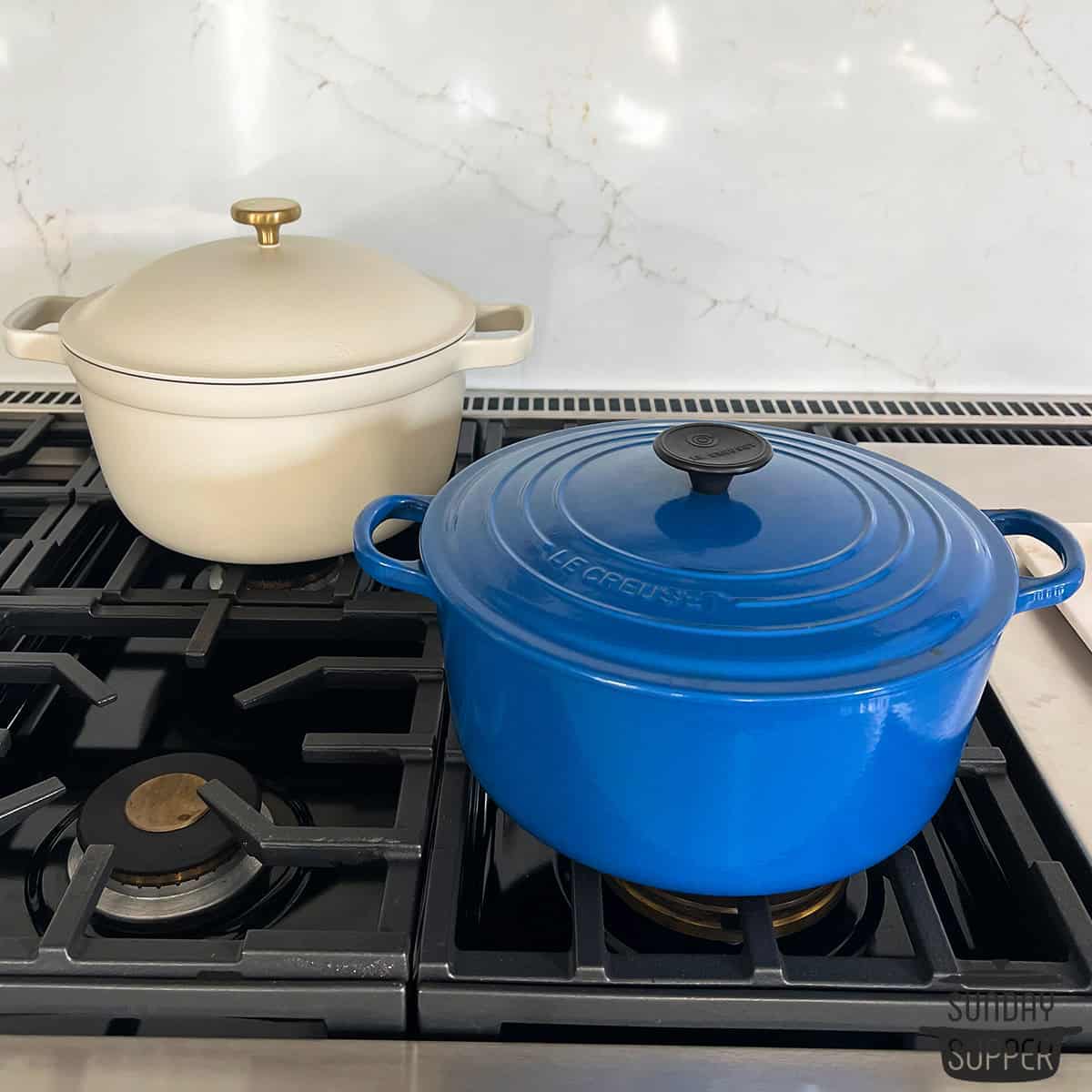
Jump to:
- Cleaning a Dutch Oven
- What You Need to Clean a Dutch Oven
- Types of Dutch Ovens
- How to Clean a Cast Iron Dutch Oven
- How to Clean an Enamel Dutch Oven
- Isabel's Braising Pot
- How to Clean Rust off Cast Iron Dutch Oven
- Dutch Oven Usage Expert Tips
- Dutch Oven Care FAQ
- How-to Guides
- More "How to Clean" Guides!
- Reviews
Cleaning a Dutch Oven
Dutch Ovens can do just about anything. I'm completely obsessed with my Dutch Oven- it's satisfyingly heavy duty, big enough to cook a family dinner in, oven-safe, and so beautiful, I can use it to serve dinner out of, too!
To be honest, it's such a gorgeous pan that I can't stop making recipes with it. Sirloin tip pot roast, corned beef, melt-in-your-mouth Korean ribs- the list goes on and on, and just gets more and more delicious!
I learned quickly how good the Dutch oven is at making an amazing roast, stew, or soup. I also learned how messy a Dutch oven gets, and how to clean a Dutch Oven! No matter how dirty your Dutch Oven gets (or already is!), I've compiled exactly what you need to get it sparkling clean.
What You Need to Clean a Dutch Oven
- Coarse Salt
- Dish Soap
- Baking Soda
- Warm Water
- Non-abrasive Sponge
- Microfiber Cloth or Paper Towel
- Cast iron Dutch Oven only: Cooking Oil
Types of Dutch Ovens
- Cast Iron Dutch Oven: Made with pure cast iron, these heavy dutch ovens don't have any coating, which makes them perfect for searing meat before stewing it. However, cast iron has unique cleaning requirements and can be ruined by cleaning them wrong. Treat them like a cast iron skillet!
- Enameled Cast Iron Dutch Oven: While the inside of these dutch ovens is still made of cast iron, all surfaces of a enamel dutch oven have been coated with nonstick. You can tell if yours is enameled if it has a smooth, shiny enamel coating or looks painted. These dutch ovens are easier to clean, but can be scratched easily!
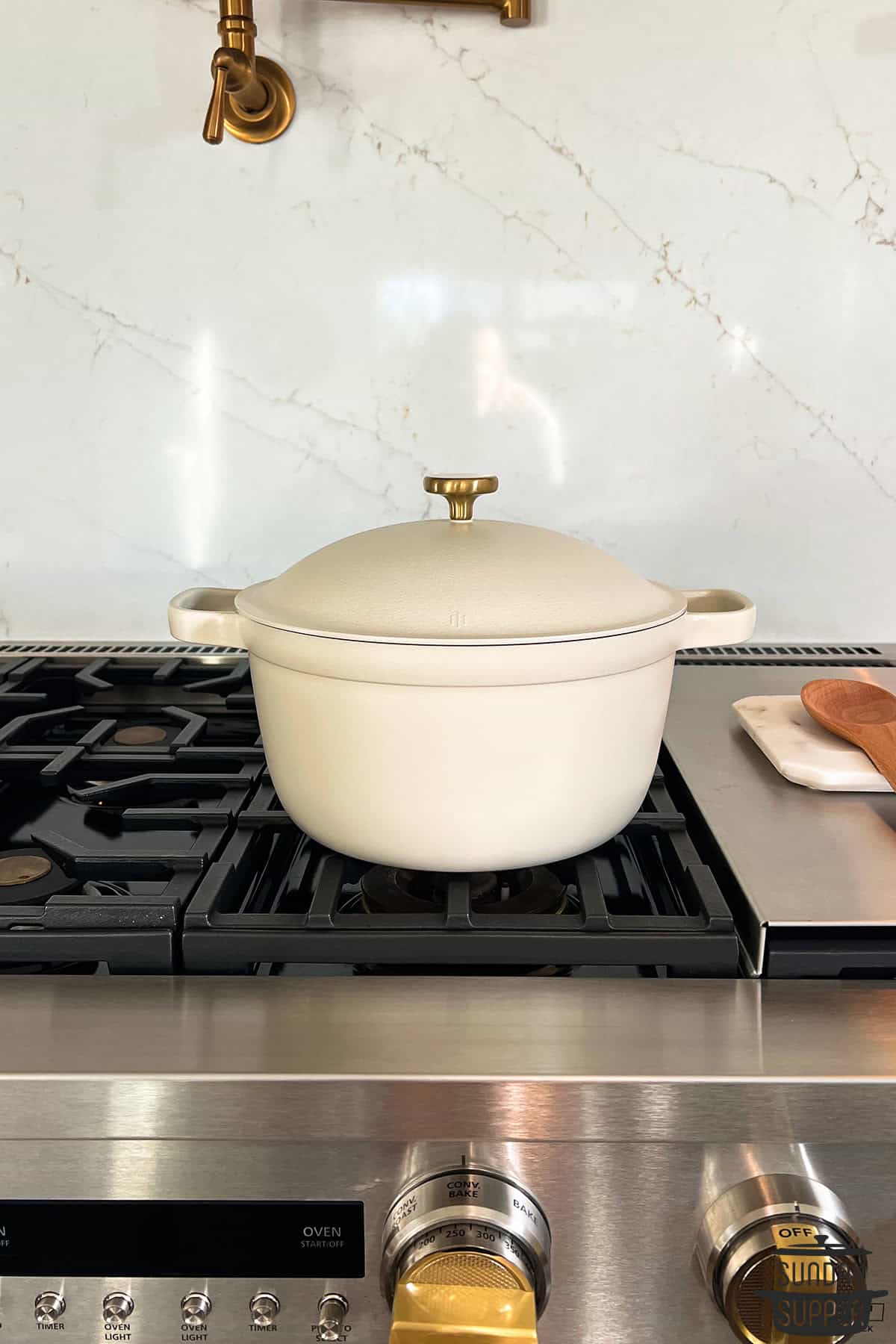
How to Clean a Cast Iron Dutch Oven
Cast iron dutch ovens are more fickle and delicate than enamel dutch ovens, so it's important to clean them carefully! Cast iron can last an entire lifetime and more if well preserved, but that all starts with gentle cleaning. Remember, don't use dishwashing liquid or steel wool on a cast iron pan. Instead, use salt and water!
1: Let the Pan Cool
Let your dutch oven cool completely before attempting to clean it. This prevents thermal shock, which can warp and ruin a good pot.
2: Add Salt
Once it's all cooled down, pour in a few Tablespoons of coarse salt plus a few drops of water.
3: Scrub Thoroughly
Using a microfiber towel or the soft side of a sponge, scrub the salt into the interior, using the coarse grain to scrape off any stuck on food. You can also use a metal spatula, wooden spoon, or plastic scraper.
4: Rinse & Dry
Rinse out the dutch oven using warm water, and dry thoroughly with a cloth or paper towels. This is important; cast-iron can rust easily if left damp.
If required, re-season the pan. You can tell it needs seasoning if the metal surface is dull instead of nice and shiny.
How to Season Cast Iron
Seasoning cast iron is a vital step to preserving it for a lifetime, and it sounds scarier than it is! Once you learn how to season cast iron pans, it will keep them in perfect shape. All you need to do is add a teaspoon or two of cooking oil to the bottom of the pan, then wipe it across the pan's entire surface with dry paper towel. Then place in an oven preheated to 450°F, flipped upside down, for one hour.
How to Clean an Enamel Dutch Oven
Enamel is much more forgiving than straight cast iron, making it much easier and more straightforward to clean an enamel coated dutch oven. In general, they can be cleaned the same way any nonstick skillet would be. I prefer to use warm soapy water and a sponge.
1: Let Cool
Let the dutch oven cool completely before cleaning. This will avoid thermal shock, which can badly damage the metal.
2: Scrub with Soap
Add a splash of warm soapy water and a gentle dish soap; I find Dawn works very well on grease and excess oil. Scrub all surfaces well.
3: Rinse & Dry
Rinse well with warm water, then dry completely. Remember to dry it very well; residual moisture can ruin a good pan!
How to Clean a Burnt Dutch Oven
If your dutch oven is especially burnt and has severely stuck on food, a great way to easily clean it is by adding 2-3 cups of water to the pot and covering it with a lid, then placing it back on the stovetop. Bring to a boil, then let simmer for 5 minutes and let cool. The steam will naturally soften stuck-on food and make it easier to clean.
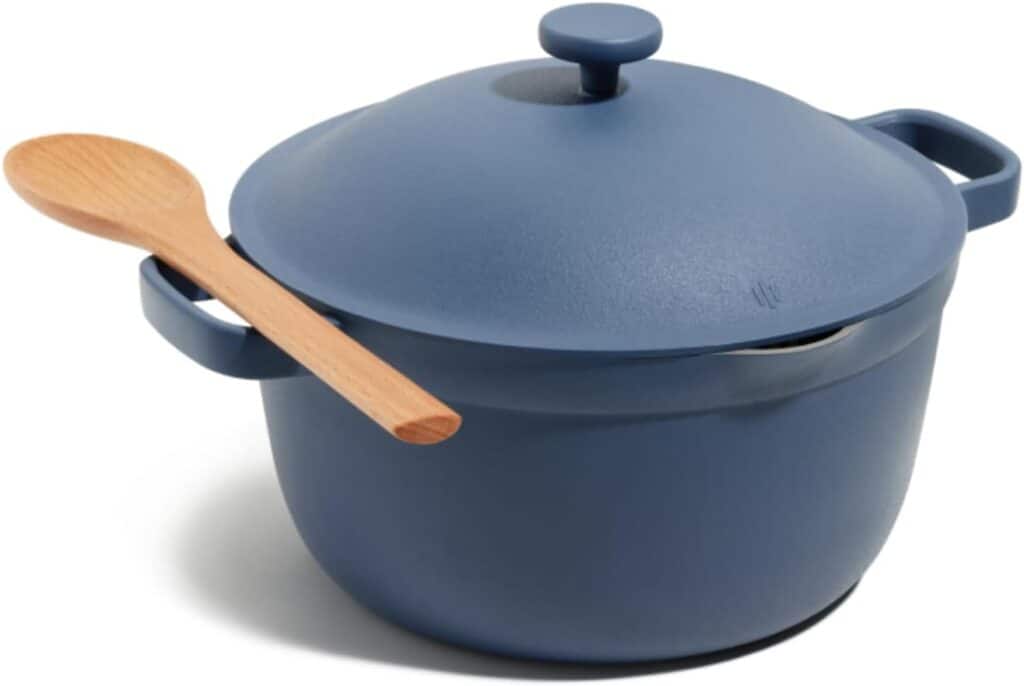
Isabel's Braising Pot
If you don't have a dutch oven already or want to treat yourself to a new pot for braising (and more!), I recommend the Perfect Pot. I love this pot so much, I basically use it for everything.
photo courtesy of Our Place on Amazon
How to Clean Rust off Cast Iron Dutch Oven
Rust is important to clean off right away, as it can get progressively more severe when not cleaned. The last thing you want is your expensive Dutch oven to get rusty and start deteriorating into your food!
You'll need some extra tools for cleaning rust:
- Steel wool or chain mail scrubber or very stuff brush
- White vinegar
- Baking soda
1: Scrub Off Rust
Using steel wool, a stiff brush, or a chain mail scrubber, scrub off as much of the visible surface rust as possible.
2: Fill Sink & Soak
Fill the sink deep enough to cover the rusty parts of the pan with equal parts white vinegar and warm water. Then immerse the rusty parts of the pan, letting it soak for 30 minutes to an hour, but no longer!
3: Scrub Again
Once the pan has soaked, scrub any rust spots again with your steel wool or scrubber.
4: Spot Clean with Baking Soda
Any residual stubborn spots can be cleaned off by mixing up baking soda with a few drops of water to make a paste, then scrubbing it into the rust spots.
5: Rinse & Dry
Rise well to remove any remaining vinegar or baking soda, then dry completely using a towel or microfiber cloth, ensuring no water remains. Re-season as necessary.
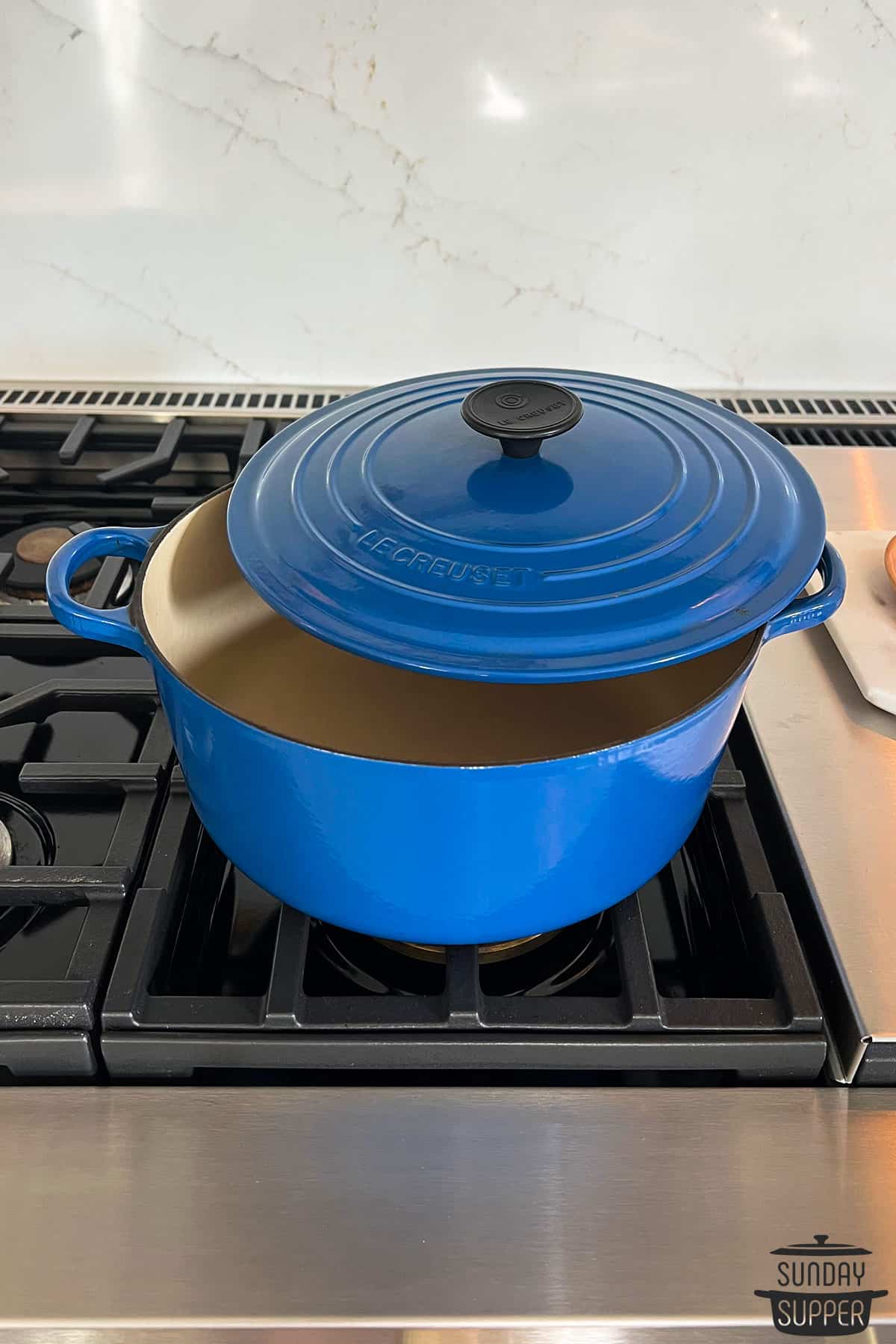
Dutch Oven Usage Expert Tips
- Never put a Dutch Oven in the dishwasher! Even enamel-coated dutch ovens are still at risk of rusting in the dishwasher, which will completely ruin pot. Cast-iron cookware is expensive, so make sure to treat it with care!
- Avoid abrasive cleaners like magic erasers, hard-bristled sponges or scrub brushes, and metal scrapers (unless you have a cast iron dutch oven). Abrasive surfaces can easily scratch and damage the enamel.
- Most cast iron dutch ovens will already be seasoned before purchasing, but you may find you need to season it again, especially after scraping off particularly stubborn stains and sticky residue.
- Dry dutch ovens very well. Leftover water droplets can lead to rusting, which is difficult to fix and can progressively worsen.
Dutch Oven Care FAQ
If your dutch oven has some especially stubborn stains, add 2 Tablespoons of baking soda to the pot alongside 4 cups of water, and let it boil with the lid on. Then drain the water and baking soda mixture and give it all a good scrub. The steam will soften residue, while the baking soda works to both deodorize and gently scrub away stains.
Yes! Follow my instructions above for how to clean rust off cast iron. Rust damage will only get worse over time, so it's important to tackle right away.
How-to Guides
- How to Use a Mandoline Vegetable Slicer
- How to Perfectly Clean a Kitchen Sink
- How to Clean and Deodorize a Microwave
- How to Clean Countertops
- How to Convert Cooking Measurements
More "How to Clean" Guides!
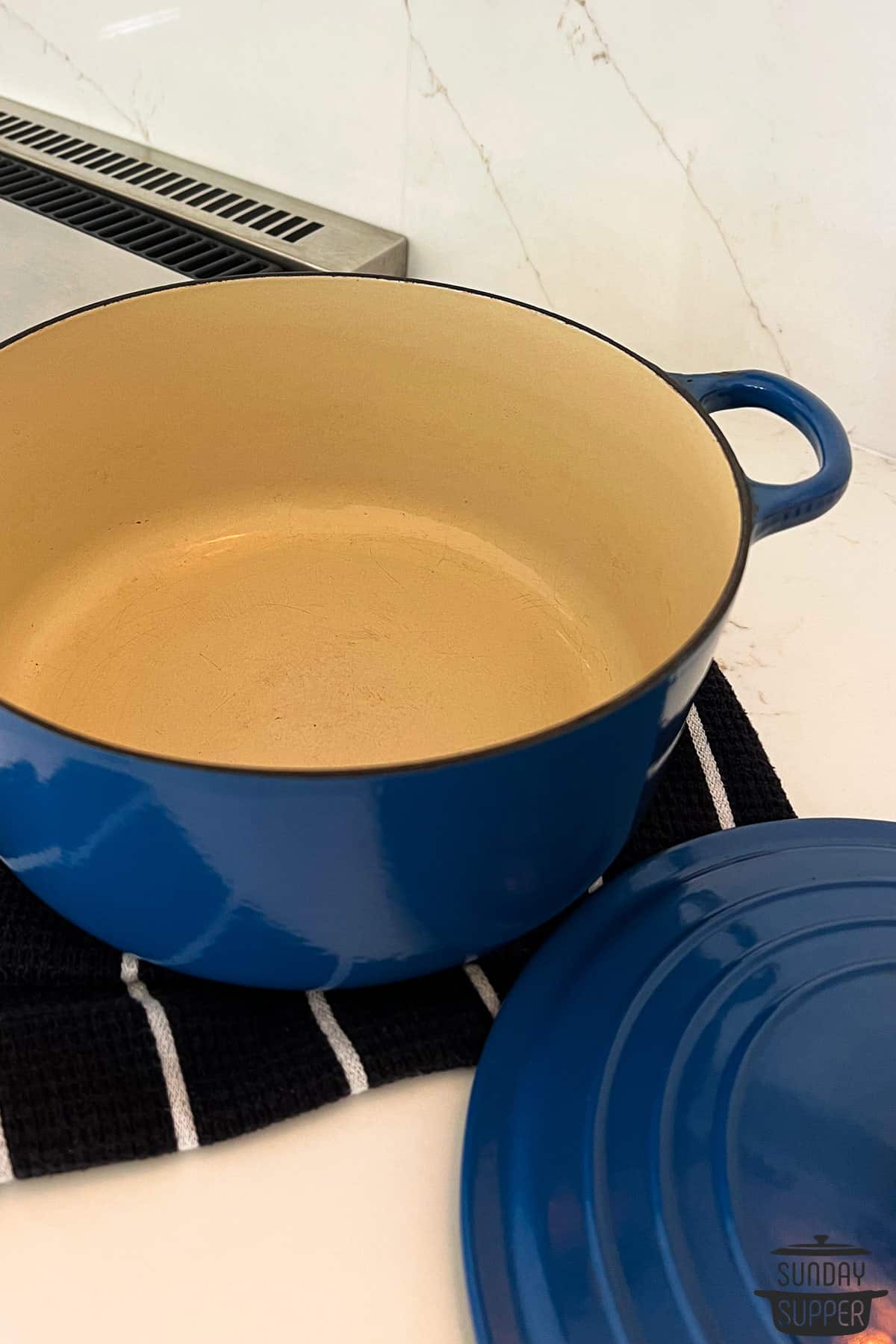


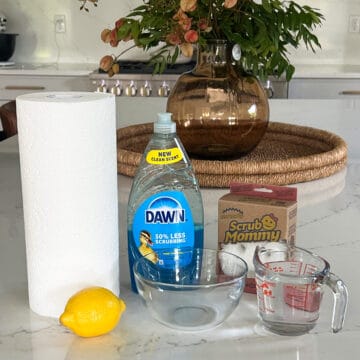

Comments
No Comments